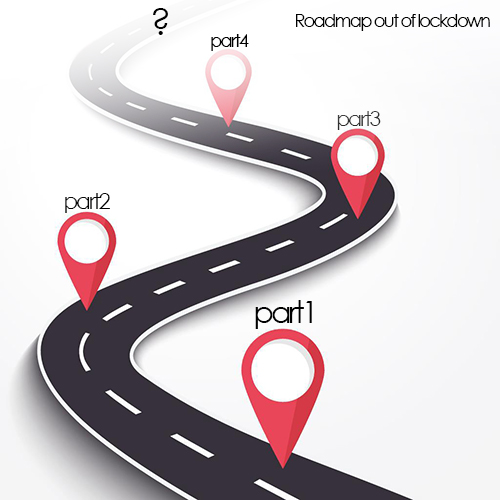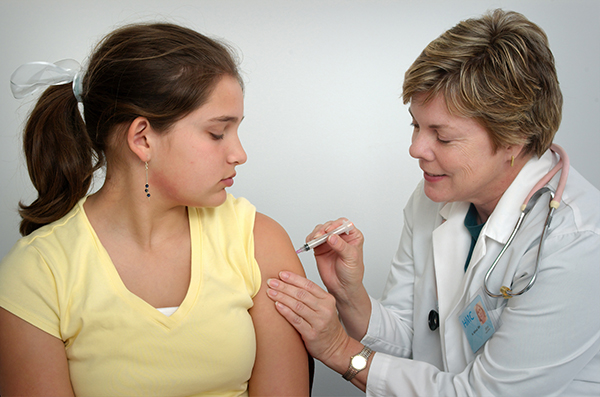
So here we are! Yes, we’re on our way back out of lock-down, we’ve gone through part one and today we start part two which is officially the day life takes one step closer to ordinary life. We’ve had the virus in our lives and affecting us directly, or indirectly for over a year now will we ever see the back of this virus what does the future hold?
As of yesterday 12th April 2021, 32 million people (48% of the population) have had their first dose of one of the three sanctioned vaccinations with 7.5 million people (11.2% of the population) who have now had both of their vaccinations – here are all the current official statistics https://coronavirus.data.gov.uk/details/vaccinations
Do we feel freer yet? Do we feel any better? Is it safe to go outside now? Why should I follow lock-down rules if I’ve had my vaccinations – aren’t I immune now? What can we expect and how quickly can we expect it to happen. When will we return to the way things were before January 2020? What will be the legacy of covid-19? All good questions, which we’ll take a look at.
Some of our previous blog posts have been concerned with Covid-19 and using PPE and common sense to help mitigate its spread. We have to face the fact that we will need to take precautions against Covid-19 and its variants in the next few years. Years? Yes, probably, if the virus keeps mutating we will need to be wary for the more vulnerable in our society. Let’s take a look at where we are now and how things will be in the very near future.
The government’s 4 part Roadmap out of Lock-down
Part 1 – COMPLETED!
8th – 29th March 2021
Changes on 8 March 2021
Education
In Step 1, our priority is to ensure that all children and students return safely to face-to-face education in schools and colleges from 8 March. Childcare and children’s supervised activities can also resume where necessary to enable parents to work or engage in similar activities. We are introducing twice-weekly rapid testing for secondary and college pupils – in addition to regular testing for all teachers – to reduce the chance of the virus spreading in schools.
Higher Education students at English universities on practical courses can also return from 8 March.
Social contact
People will be allowed to leave home for recreation and exercise outdoors with their household or support bubble, if they are eligible for one, or with one person from outside their household. Care home residents will also be allowed one regular visitor.
Changes on 29 March 2021
Social contact
The evidence shows that it is safer for people to meet outdoors rather than indoors. And this is why from 29 March, when most schools start to break up for the Easter holidays, outdoor gatherings (including in private gardens) of either 6 people (the Rule of 6) or 2 households will also be allowed, making it easier for friends and families to meet outside.
Business and activities
Outdoor sports facilities such as tennis and basketball courts, and open-air swimming pools, will also be allowed to reopen, and people will be able to take part in formally organised outdoor sports.
Travel
The ‘stay at home’ rule will end on 29 March but many restrictions will remain in place. People should continue to work from home where they can and minimise the number of journeys they make where possible, avoiding travel at the busiest times and routes. Travel abroad will continue to be prohibited, other than for a small number of permitted reasons. Holidays abroad will not be allowed, given it will remain important to manage the risk of imported variants and protect the vaccination programme. The government has launched a new taskforce to review global travel which will report on 12 April.
Part 2 – NOW
Changes from 12 April 2021
The level will not progress to level 3 if covid-19 infections grow unreasonably
Business and activities
Step 2, which will be no earlier than 12 April, will see the opening of non-essential retail; personal care premises such as hairdressers and nail salons; and public buildings, including libraries and community centres. Indoor leisure facilities such as gyms will also reopen (but only for use by people on their own or in household groups); as will most outdoor attractions and settings including outdoor hospitality venues, zoos, theme parks, and drive-in cinemas. Self-contained accommodation such as campsites and holiday lets, where indoor facilities are not shared with other households, can also reopen.
Hospitality venues will be allowed to serve people outdoors at Step 2 and there will be no need for customers to order a substantial meal with alcoholic drinks and no curfew, although customers must order, eat and drink while seated (‘table service’). Wider social contact rules will apply in all these settings to prevent indoor mixing between different households.
Events
While funerals can continue with up to 30 mourners, the number of people able to attend weddings, receptions and commemorative events such as wakes will rise to 15.
Part 3
Changes not before 17 May 2021 earliest (depends on infection rate)
The level will not progress to level 4 if covid-19 infections grow unreasonably
Social contact
As part of Step 3, no earlier than 17 May, the government will look to continue easing limits on seeing friends and family wherever possible, allowing people to decide on the appropriate level of risk for their circumstances.
This means that most legal restrictions on meeting others outdoors will be lifted – although gatherings of over 30 people will remain illegal. Indoors, the Rule of 6 or 2 households will apply – we will keep under review whether it is safe to increase this.
As soon as possible and by no later than Step 3, we will also update the advice on social distancing between friends and family, including hugging. But until this point, people should continue to keep their distance from anyone not in their household or support bubble.
Business and activities
Most businesses in all but the highest risk sectors will be able to reopen. In all sectors, COVID-Secure guidance will remain in place and businesses may not cater for groups bigger than the legal limits. Indoor hospitality will reopen – and as in Step 2, venues will not have to serve a substantial meal with alcoholic drinks; nor will there be a curfew. Customers will, however, have to order, eat and drink while seated.
Other indoor locations to open up in Step 3 include indoor entertainment venues such as cinemas and children’s play areas; the rest of the accommodation sector, including hotels, hostels and B&Bs; and indoor adult group sports and exercise classes. The government will also allow some larger performances and sporting events in indoor venues with a capacity of 1,000 people or half-full (whichever is a lower number), and in outdoor venues with a capacity of 4,000 people or half-full (whichever is a lower number). In the largest outdoor seated venues, where crowds can be spread out, up to 10,000 people will be able to attend (or a quarter-full, whichever is lower).
Events
Up to 30 people will be able to attend weddings, receptions and wakes, as well as funerals. This limit will also apply to other types of significant life events including bar mitzvahs and christenings.
Review of social distancing
Finally, before Step 4 begins, the government will complete a review of social distancing and other long-term measures that have been put in place to cut transmission. This will inform decisions on the timing and circumstances under which the rules on 1 metre plus, the wearing of face coverings and other measures may be lifted. This will also inform guidance on working from home – which should continue wherever possible until this review is complete.
Part 4
Changes not before 21 June 2021 earliest (depends on infection rate)
The level will not progress if covid-19 infections grow unreasonably
Social contact
By Step 4 which will take place no earlier than 21 June, the government hopes to be in a position to remove all legal limits on social contact.
Business, activities and events
We hope to reopen remaining premises, including nightclubs, and ease the restrictions on large events and performances that apply in Step 3. This will be subject to the results of a scientific Events Research Programme to test the outcome of certain pilot events through the spring and summer, where we will trial the use of testing and other techniques to cut the risk of infection. The same Events Research Programme will guide decisions on whether all limits can be removed on weddings and other life events.
As we move through each of these phases in the roadmap, we must all remember that COVID-19 remains a part of our lives. We are going to have to keep living our lives differently to keep ourselves and others safe. We must carry on with ‘hands, face, space’. Comply with the COVID-Secure measures that remain in place. Meet outdoors when we can and keep letting fresh air in. Get tested when needed. Get vaccinated when offered. If we all continue to play our part, we will be that bit closer to a future that is more familiar.
Beyond Part 4 – August-October
So when will we be back to normal? Even if the UK managed to get through stage 4 quickly we may be socially distancing and wearing masks for months if not years to come. The earliest we could be through our four roadmap steps is August, depending on whether there will be any new outbreaks, surges or more virulent strains of Corona virus.

Vaccinations
So you’ve been vaccinated. You feel great. You just want to get on with your life and get this whole Covid thing out of the way. Why not just break lockdown, why not just go do whatever you like? Firstly, if you’re vaccinated, yes, this means you’re possibly safer but on each vaccination there is a effectiveness rate. Let’s take a look at what they say about all the available vaccinations and their effectiveness against Covid-19.
AstraZenica – 76% – 79% effective. Pfizer – 95% effective. Moderna – 92% effective. These are the three main vaccines available in the UK, if you’ve been vaccinated before 13th you would have got one of these three. Why do they say somewhere between 76% and 95% effective – this means that out of 100 people the vaccine will not work with between 24 to 5 people! So they may still get Covid-19 although vaccinated against it! The Astrazenica is by far the most used vaccine in the UK. So potentially of the 20million people vaccinated with Astrazenica 4.5million of these people could still get Covid-19 even though they’ve been vaccinated. Vaccination does NOT mean immunity, and doctors don’t yet know if being vaccinated will stop the spread of covid-19 at all.
You may be vaccinated, but may be part of the 5 – 24% of people that the vaccination is ineffective for. Then contract covid-19 and be asymptomatic, having no outward symptoms at all from the virus, meaning you will contagious and spread it to others. According to the medical net, up to an increadible 86% of people with Covid-19 may be asymptomatic!

The Future
Will we be given one of the more effective vaccines? This is unlikely, AstraZenica costs the government £3 a dose and can be kept in fridge, which is by far the most economical and easiest to store. Whereas both Pfizer, costing £13 per dose and Moderna, costing £28 per dose must be kept at -30 to – 70 degrees C minimum!
What is the best way to mitigate the 20% inefficiency of the vaccination? The answer is continued social distancing and wearing face masks. Meaning face masks may be prominant in our future, until Covid-19 is eradicated or contained. Also, giving everyone yearly booster shots to keep them safe, but Covid could be around for many many years to come in some form.
We could face a third or fourth lockdown in the future. If covid-19 mutates again, the UK may face more lockdowns in the future and the vaccinations will need to be reworked or tweaked to combat these new strains.

Will we ever get back to the way things were? The answer is probably. But not anytime soon. The earliest if everything goes to plan that the UK will be back to normal will be August/September. This is based on everything going to plan; with the infection rate staying low, with vaccinations working and everyone going back to work. More realistically, things may be back to normal January/February 2022. However, it will be a while before the world is back to normal – we will need to put an effort into vaccinating the world.
Do we feel better or will we? Since January 2020 the people of the world have had to stay isolated and confined at home on and off this has had negative effects both physically and mentally. We may have years of therapy to get back to a pre-covid culture and getting back on our feet to get fit again!
